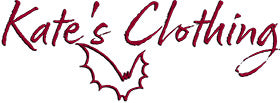Tactics of Coercive Control - What to Watch For
Share
Coercive control is a form of domestic abuse that involves a pattern of controlling behaviors used by one person to dominate and manipulate another. It is important to understand the tactics used in coercive control in order to recognize them, protect yourself, and help others who may be experiencing this type of abuse. In this blog post, we will explore some common tactics used in coercive control and provide guidance on how to identify them and take action.
What are the tactics used in coercive control?
Coercive control tactics can vary in their severity and intensity, but they all aim to establish power and control over the victim. Some common tactics include:
- Isolation: The abuser may isolate the victim from friends, family, and support networks, making them dependent on the abuser for social interaction and support.
- Monitoring: The abuser may constantly monitor the victim's activities, including their phone calls, text messages, and online presence, in order to maintain control and prevent them from seeking help.
- Threats and intimidation: The abuser may use threats, intimidation, and fear to control the victim, making them feel unsafe and powerless. These can range from overt to very subtle.
- Financial control: The abuser may control the victim's finances, limiting their access to money and resources, and making them financially dependent.
- Gaslighting: The abuser may manipulate the victim's perception of reality, making them doubt their own thoughts, feelings, and experiences.
How can you spot these tactics?
Spotting the tactics used in coercive control can be challenging, as they often occur gradually and subtly. However, there are some signs to look out for:
- Isolation: If someone you know suddenly becomes isolated from their friends and family, or if they seem overly dependent on their partner for everything, it could be a red flag.
- Monitoring: If someone is constantly checking in with their partner, seeking permission for everyday activities, or seems fearful of their partner's reaction to their actions, it may indicate monitoring.
- Threats and intimidation: If you notice someone being constantly criticized, belittled, or threatened by their partner, it is important to take it seriously.
- Financial control: If someone has limited access to money, is unable to make financial decisions, or is constantly asking for money, it could be a sign of financial control.
- Gaslighting: If someone you know is constantly doubting their own memory, perception, or sanity, it may be a result of gaslighting.
How can you protect yourself and help others?
If you suspect that someone you know is experiencing coercive control, it is important to approach the situation with care and sensitivity. Here are some steps you can take:
- Listen and believe: If someone opens up to you about their experiences, listen to them without judgment and believe their story.
- Offer support: Let the person know that you are there for them and that they can rely on you for support.
- Encourage professional help: Suggest that they seek help from a professional, such as a therapist or counsellor, who can provide guidance and support.
- Safety planning: Help the person develop a safety plan, which may include identifying safe places to go, creating a code word for emergencies, and documenting evidence of abuse.
- Report to authorities: If you believe someone is in immediate danger, do not hesitate to contact the authorities.
Click Here for some resources and organisations you can contact to seek help or if you've been affected at all by the subject matter in this blog.
Coercive control is a serious form of abuse that can have long-lasting effects on the victim's physical and mental well-being. By understanding the tactics used in coercive control, spotting the signs, and taking action, we can help create a safer and more supportive environment for those affected by this type of abuse.
Disclaimer: I'm not an expert and this is just a blog. I've seen and experienced coercive control and I continue to see and experience it. I wanted to use my small platform to help shine a light on it. I know how difficult it is to see when it's happening to you. Please make use of this list of Domestic Abuse resources if you'd like any advice.
